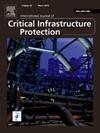A novel data–intelligence–driven three–stage dynamic model for resilience assessment in an emergency material support system
IF 5.3
3区 工程技术
Q1 COMPUTER SCIENCE, INFORMATION SYSTEMS
International Journal of Critical Infrastructure Protection
Pub Date : 2025-09-13
DOI:10.1016/j.ijcip.2025.100804
引用次数: 0
Abstract
Resilience is a crucial benchmark in characterizing the comprehensive capability of the emergency material support system (EMSS) to respond to major risk events. Given the involvement of multiple stakeholders, multiple stages and dynamic evolution, EMSS resilience assessment remains a challenge. Therefore, we attempt to develop a novel data–intelligence–driven three–stage dynamic model based on multi–source text data and multi–expert knowledge. In Stage 1, a large language models–enhanced named entity recognition model is proposed to extract and analyze EMSS risk events, providing a foundational dataset for scenario construction. In Stage 2, an ontology–based scenario construction model is proposed to abstract risk events into ontological concepts, providing a feature reference for the hierarchical system of assessment criteria. In Stage 3, a feature–matching assessment model is proposed to quantify the profile of EMSS resilience, where the uncertainty and variability in experts’ perceptions of resilience feature are addressed. Subsequently, the model effectiveness is demonstrated in a case study, in which the key criteria and improvement paths for EMSS resilience are identified. This study provides a holistic solution and efficient methodology for EMSS resilience assessment, offering significant insights into a multifaceted recognition of EMSS resilience to risk scenarios.
一种新的数据智能驱动的应急物资保障系统弹性评估三阶段动态模型
应变能力是衡量应急物资保障系统(EMSS)应对重大风险事件综合能力的重要指标。由于涉及多个利益相关者、多个阶段和动态演变,EMSS弹性评估仍然是一个挑战。因此,我们尝试开发一种基于多源文本数据和多专家知识的数据智能驱动的三阶段动态模型。第一阶段,提出了一种大型语言模型增强的命名实体识别模型,用于提取和分析EMSS风险事件,为场景构建提供基础数据集。第二阶段,提出基于本体的场景构建模型,将风险事件抽象为本体概念,为分级评价标准体系提供特征参考。在第三阶段,提出了一个特征匹配评估模型来量化EMSS弹性概况,其中解决了专家对弹性特征感知的不确定性和可变性。随后,通过案例研究证明了模型的有效性,并确定了EMSS弹性的关键标准和改进路径。本研究为EMSS弹性评估提供了一个整体的解决方案和有效的方法,为EMSS对风险情景的弹性的多方面认识提供了重要的见解。
本文章由计算机程序翻译,如有差异,请以英文原文为准。
求助全文
约1分钟内获得全文
求助全文
来源期刊

International Journal of Critical Infrastructure Protection
COMPUTER SCIENCE, INFORMATION SYSTEMS-ENGINEERING, MULTIDISCIPLINARY
CiteScore
8.90
自引率
5.60%
发文量
46
审稿时长
>12 weeks
期刊介绍:
The International Journal of Critical Infrastructure Protection (IJCIP) was launched in 2008, with the primary aim of publishing scholarly papers of the highest quality in all areas of critical infrastructure protection. Of particular interest are articles that weave science, technology, law and policy to craft sophisticated yet practical solutions for securing assets in the various critical infrastructure sectors. These critical infrastructure sectors include: information technology, telecommunications, energy, banking and finance, transportation systems, chemicals, critical manufacturing, agriculture and food, defense industrial base, public health and health care, national monuments and icons, drinking water and water treatment systems, commercial facilities, dams, emergency services, nuclear reactors, materials and waste, postal and shipping, and government facilities. Protecting and ensuring the continuity of operation of critical infrastructure assets are vital to national security, public health and safety, economic vitality, and societal wellbeing.
The scope of the journal includes, but is not limited to:
1. Analysis of security challenges that are unique or common to the various infrastructure sectors.
2. Identification of core security principles and techniques that can be applied to critical infrastructure protection.
3. Elucidation of the dependencies and interdependencies existing between infrastructure sectors and techniques for mitigating the devastating effects of cascading failures.
4. Creation of sophisticated, yet practical, solutions, for critical infrastructure protection that involve mathematical, scientific and engineering techniques, economic and social science methods, and/or legal and public policy constructs.
 求助内容:
求助内容: 应助结果提醒方式:
应助结果提醒方式:


